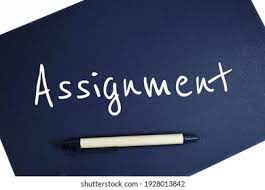English literature is not just a subject of arts and humanities but something more deeper and historical. It is an ocean of poetries, prose, fiction, authors, literary devices, and many more which run deep with a long history. Each age has been unique in the works in the context of the themes, styles, topics, and culture from the earliest day of anglo Anglo-Saxon era up to the post-modern era. In this article we will draw the timeline of English Literature fragmented into different periods, exploring the contributions and characteristics of poets, playwrights, and novelists of these periods in English literature.
Old English (Anglo-Saxon) Period
This period is considered to be the earliest phase of English literature which lasted from the 5th to the 11th century. The Anglo-Saxon period portrays heroic values and the culture of warriors in its texts and epic poetries. The Anglo-Saxon age established the basis for English literature by preserving myths and customs through oral poetry. These early works continue to have an impact today and provide an understanding of the ideals and culture of a bygone era.
Some of the important works are –
- The epic poem Beowulf is among the most well-known creations of this era.
- Another important piece is The Exeter Book, a collection of poems that includes riddles, elegies, and religious verse.
- The Seafarer, which captures the harsh reality of life at sea and the need for spiritual salvation, is one of the most well-known poems in this collection.
- Caedmon who wrote Caedmon hymns stands out when compared to other notable Anglo-Saxon poets.
Middle English Period
The Middle English period in English literature, which dates from the 11th to the late 15th century, was a significant era in the development of both the English language and literature which served as the foundation for modern English. Geoffrey Chaucer who is known as the father of English literature is credited for gathering the vocabulary of the Middle English dialect and writing poetry in it. This era was like a bridge between the Old English era and the Renaissance period and prepared a base for the literary legends that the world witnessed in succeeding centuries.
Some of the main works of this era are –
- The Canterbury Tales by Geoffrey Chaucer is among the notable works from this era.
- Arthurian romance poem Sir Gawain and the Green Knight is renowned for its sophisticated poetry, chivalric themes and moral quandaries.
- Confessio Amantis a collection of moralistic tales written by John Gower.
The Renaissance or Elizabethan period
The Renaissance era in English literature was marked by a significant transformation in intellectual, cultural and artistic aspects, which began in the sixteenth century and lasted up to the early seventeenth. It was characterised by a return to classical Literature, art, science and exploration. This era during the reign of Queen Elizabeth I was an age of discovery, adventure, education, humanism, independence and creativity. Art and literature flourished in this period and it gave poets who were born once in centuries such as Shakespeare that’s why it is called the Golden Period of English literature.
Some of the key works are –
- Shakespeare’s dramas Hamlet, Romeo and Juliet and Macbeth and his sonnets are among the most well-known pieces from this period.
- Christopher Marlowe is most remembered for his theatrical works, such as Doctor Faustus and Tamburlaine.
- The massive piece of allegorical poetry known as The Faerie Queene by Edmund Spenser
- The prose writings of Sir Thomas More, whose Utopia examined political and social ideals.
The Neoclassical Period
This movement in English literature made a retreat to the classical structures and principles emphasising reason, order and religious aspects but not like old classics rather with new themes and works. It flourished between the late 17th to the early 19th century which was more a response to the excesses of the Renaissance era. Epics and mock epics were prevalent in this period which discussed the ancient mythological figures. A return to ancient models throughout the Neoclassical era had an impact on not only literature but also on art, architecture, and philosophy.
Some of the notable works are –
- The epic poem Paradise Lost by John Milton is one of the most well-known examples of Neoclassical literature.
- The Rape of the Lock a mock-heroic by Alexander Pope is a poem that satirically criticises.
- Jonathan Swift’s satirical book Gulliver’s Travels.
- Samuel Johnson’s A Dictionary of the English Language.
The Romantic Period
Industrialisation and rationalism had increased to such an extent that a major portion of society and nature were being exploited. In response to this exploitation, English literature experienced the Romantic period between the late 18th and the early 19th century, marked by a paradigm shift in creative and intellectual values. It is characterised by texts which celebrate individualism, rejection of social conventions, and the emotional expression of human feelings. The poets also glorified and appreciated the beauty of nature to emphasise its importance that people at that time had forgotten.
Some of the key works are –
- Romantic poems of William Wordsworth such as Lines Composed a Few Miles Above Tintern Abbey and I Wandered Lonely as a Cloud are among the most well-known pieces of this era.
- The collection of poems Lyrical Ballads is a joint work of Wordsworth and Samuel Taylor Coleridge and portrays the natural world and the everyday life of common people.
- The Gothic fiction of Mary Shelley’s Frankenstein examined issues of science, creation, and the results of human ambition.
- John Keats’ odes, including Ode to a Nightingale and Ode to a Grecian Urn, are a masterpiece of sensual imagery.
The Victorian Period (1832–1901)
During the reign of Queen Victoria, from the early 19th century to the start of the 20th century this literary movement marked a shift towards complex interaction of social change, moral principles, and literary innovation. Victorian literature was characterised by mysticism, spiritualism and supernatural themes and the technological, scientific and industrial progress at that time was also featured. The works of this period showcased Victorian society, class differences and the treatment of women and children in it. Victorian novels idealised characters with difficult lives in which hard work, perseverance, love and luck win out in the end.
- Great Expectations and A Tale of Two Cities by Charles Dickens, clearly illustrates the social inequalities and class divisions in Victorian society.
- Jane Eyre, a novel by Charlotte Bronte discusses themes like feminism, morality, and social class.
- Wuthering Heights by Emily Bronte is an enduring work of literature with themes of love and revenge.
- Dramatic monologues of Robert Browning, such as My Last Duchess and A Grammarian’s Funeral.
- Narrative poem of Alfred Lord Tennyson The Charge of the Light Brigade.
The Modern Period (1914)
This era in English literature from the early to middle of the 20th century saw a considerable change from earlier literary norms which was a reflection of the enormous societal, cultural, and technological progress that were taking on at the time. To depict the ambiguity and upheaval of the early 20th century, the Modern period was characterized by a rejection of conventional narrative structures. Abstractism and formalism also became key features of modernism. It was a period of tremendous innovation when authors looked for fresh methods to convey the intricacies of the contemporary world.
Some of the key works are –
- Ulysses, a novel by James Joyce, captures the inner thoughts and feelings of its protagonists during a single day in Dublin.
- The Waste Land by T.S. Eliot explores the disillusionment and disintegration experienced in the years following World War I.
- Mrs. Dalloway and To the Lighthouse by Virginia Woolf is known for the narrative device of stream of consciousness.
The Postmodern Period (1944)
The postmodern era in English literature, which began in the middle of the 20th century and continues into the 21st, challenges traditional literary conventions and departs from the conventional narratives of the modernist age. It is distinguished by a focus on fragmentation, metafiction, and the blending of reality and fiction. The idea of idealism was shunned by post-modern writers, who valued multiple perspectives and narratives. It discussed the effects of technology on society and challenges related to cultural diversity and identity. The complexity of the modern world and the dynamic character of literature itself are reflected in this period’s ongoing evolution.
- Midnight’s Children by Salman Rushdie
- Gravity’s Rainbow by Thomas Pynchon is a challenging and expansive work that defies conventional storytelling.
- Tom Stoppard’s Rosencrantz and Guildenstern Are Dead
- Samuel Beckett’s Waiting for Godot
Conclusion
The English literature that we study today has a long history and developed through various eras, each of which has contributed unique poetry, prose and fiction. These literary periods are a reflection of how literature and writers have evolved along with society and its conditions, values, concerns, and beliefs. So one can learn about the evolution of human experience and appreciate the wide diversity of voices that have contributed to the literature world by investigating the works from various eras. English literature is a rich source of artistic and cultural expression and in this article, the discussion of the literary period will not only give a deep understanding of them but also will be helpful for your English assignments.




